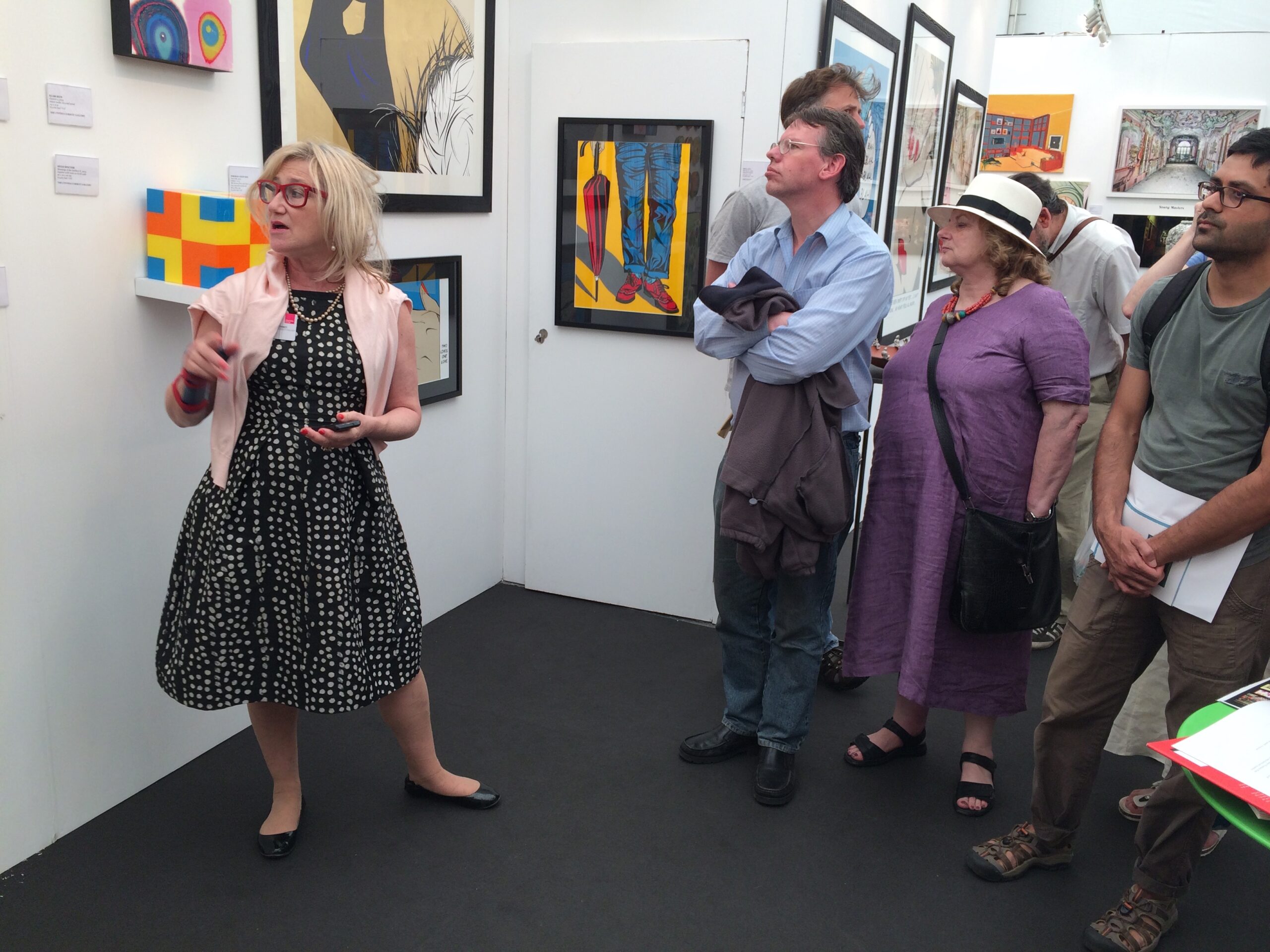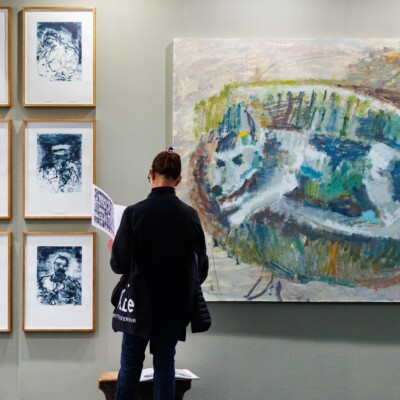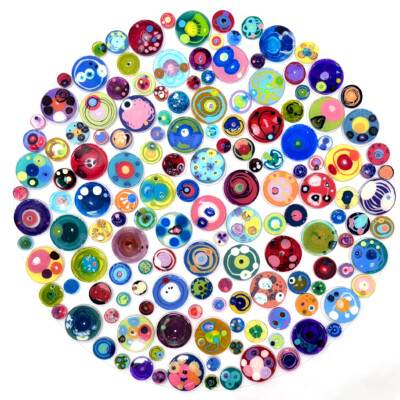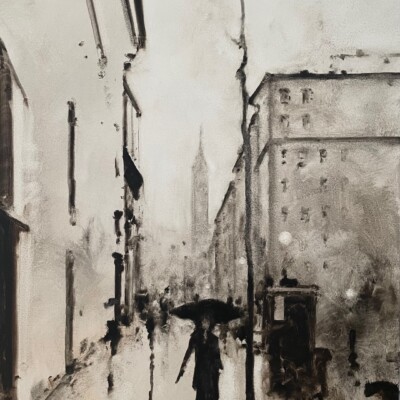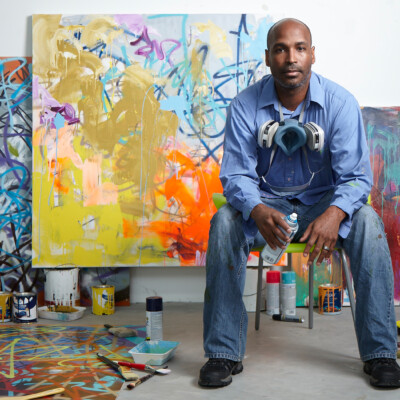Cynthia Corbett attained an MA in Law and Diplomacy at Tufts University, which was followed by a first career as an international economist and diplomat. An enduring passion for art eventually resulted in attaining a second Masters, at Christie’s Education in London. In 2004, she founded the Cynthia Corbett Gallery, which represents emerging and newly established contemporary artists and is a regular exhibitor at major international contemporary art fairs. In 2009, she founded The Young Masters Art Prize celebrates artistic skill and innovation with awareness of the Old Masters and the art of the past. https://www.thecynthiacorbettgallery.com
The gallery in Wimbledon, London, hosts exhibitions and art & jazz salons with viewings available by appointment. You’ll see the gallery at art fairs in the UK and USA alike, featuring selected works from the Young Masters Art Prize in the touring program.
Services offered include sourcing and commissioning works of art, with other collector needs provided. Please enquire with your needs, to see how Cynthia and her team can help to grow and maintain your collection.
AWAD Founder and CEO Susan J Mumford spoke with Cynthia over lunch at Andrew Edmunds in Soho, London. This interview has been published in conjunction with the Cynthia Corbett Gallery’s participation in the London Art Fair from 22nd – 26th January 2020. Visit the gallery at Stand 5 and see a show preview here.
1. Describe your business in 5 words:
Creative, mentoring, art historical, contemporary and dynamic
2. What inspired you to pursue this career?
It’s two-fold: 1) It was prompted by a personal situation, as my daughter was experiencing educational problems and as an international economist who was flying around, something had to change; and 2) I was missing art, including music, visual art alike. It was an evolution that I needed to make.
3. What’s the most wonderful thing about the profession?
I get to make my own world and surround myself with art, in all its forms. Additionally, I also feel quite enriched because of the breadth and variety of the artists with whom I interact.
4. And let’s get real… What’s the most challenging aspect of the profession?
Admin and financial pressure.
5. What’s the best piece of professional advice you’ve been given?
When studying for post grad at Christie’s Education in London, the lecturer asked everyone what they wanted to do and who wanted to open a gallery. Half of the audience raised hand. He asked about who wants to make money. I was the only one who raised my hand. He stated to everyone that I was the only one in the room who had a chance of being successful! He went on to talk about the value of the artists, for the collectors, for everyone. It seems like common sense, and at the time, it was really, really important. Here’s the thing: It’s about the value you’re putting on yourself and your artists.
6. What do you now say to someone who is just starting out? (Maybe it’s that one thing you wish someone had told you!)
I have two key pieces of advice: 1) Be true to yourself and don’t try to represent artists whose work you don’t really like. It’s important that you truly believe in artists, as this belief is what will see success for both of you. 2) Also, understand that it’s hard to raise finance (for example, if you’re getting sponsorship for exhibitions or special events.)
7. What challenge is the industry facing that art dealers need to address?
Galleries have to be able to be fast, flexible and be willing to face change. I’m fortunate as I’m an internationalist anyway, but the challenge is that we’re in a shifting economic world, which means that regulations, laws, and all kinds of things we can’t even imagine yet are going to change. This will be seen locally and afar.
We need support from organisations like AWAD and the UK Friends of the National Museum of Women in the Arts (UK Friends of NMWA). We need support from governmental bodies. It’s going to get tricky, and will require taking calculated risks.
The most important advice I’d give someone in context of these changes is this: diversify. Think about the markets where you exhibit and sell the mediums that you show and the currencies in which you’re selling.)
8. If you had to be one work of art, what would you be – and why?
‘A Bar at the Folies-Bergère’ (1882) by Édouard Manet. (image from Wikipedia)

I’d be A Bar the Folies-Bergeère by Édouard Manet. One of the reasons why is that the subject has her arms out in a gesture of being welcoming, plus she has plenty of necessary fuel behind her. It’s a metaphor for energy, friendliness and inclusivity.
9. What do you personally believe are the best advantages of being part of an association like AWAD, and how have you benefited?
As a Founding Member of AWAD, a Friend of the Royal Academy of Arts (RA), a Patron of TATE and a Patron of the Victoria & Albert Museum (V&A), I understand that it’s about having like-minded people around you. This enables you to discuss areas of importance, including sharing the wonderful things that are happening with art and the industry, as well as sharing the challenges, including what we experience as creative professionals. It really is refreshing to review things with like-minded people.
10. How can you make the most out of being a member of a professional network?
It has to be give and take. If only take, it will only work for awhile as people will find you out. Depending on time resources, go to as many events as you can, read network newsletters and communications, and make use of the channels afforded to you, for example sending updates to your membership coordinator who can promote you and your activities. Take advantage where it makes sense to give, and take advantage of that which will benefit your business. Membership networks are give and take.
Cynthia Corbett Gallery
https://www.thecynthiacorbettgallery.com
Instagram: @cynthiacorbettgallery // Twitter: @corbettGALLERY // Artsy: https://www.artsy.net/cynthia-corbett-gallery
Young Masters Art Prize
https://www.young-masters.co.uk/
Instagram: @youngmastersartprize Twitter: @corbettPROJECTS
